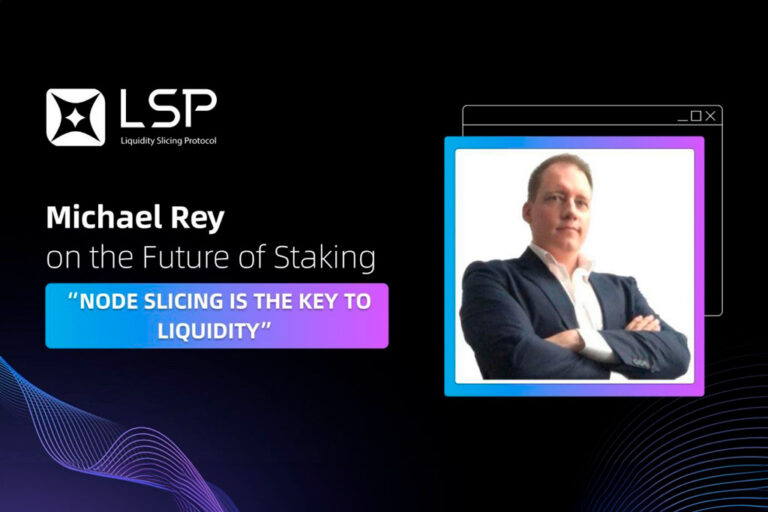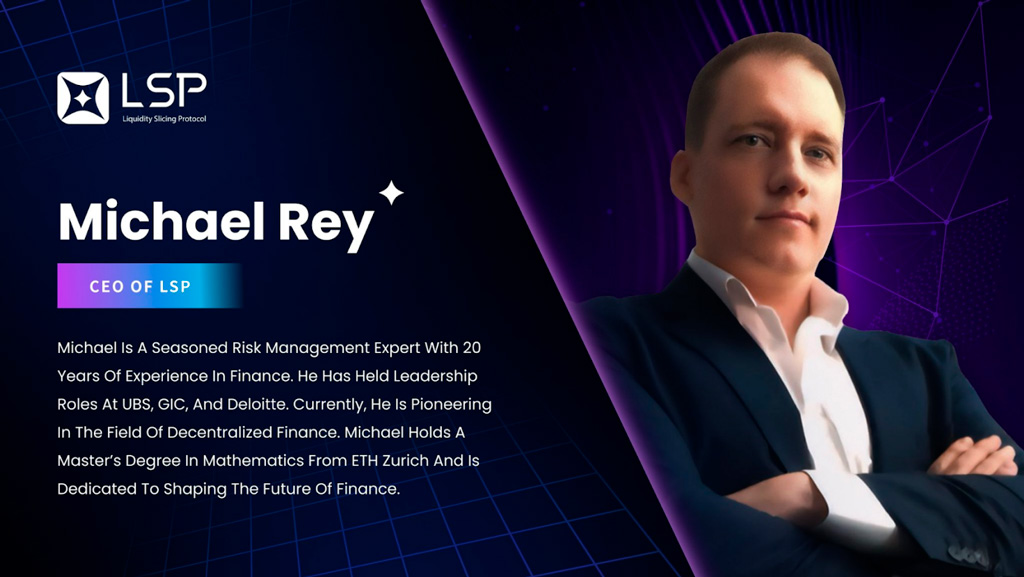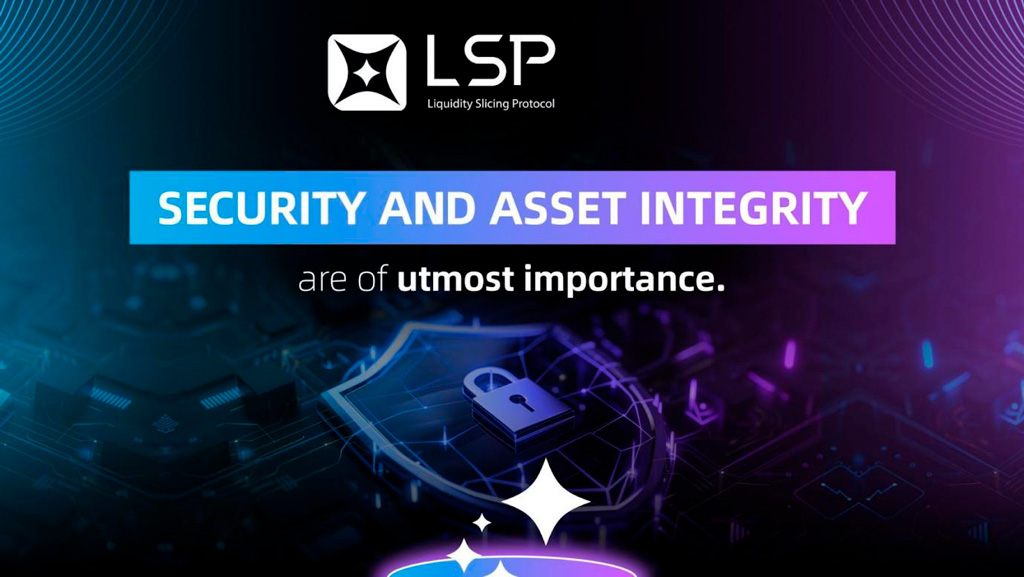
LSP Network Announces Breakthrough in Staking Liquidity with Innovative Node Slicing Protocol

/LSP Network/ – The Liquidity Slicing Protocol for Node Staking (LSP), operating on the decentralized verification network Omniverify Chain, announces that it innovatively addresses liquidity issues of DPoS/PoS node staking assets through node slicing technology. This mechanism facilitates the slicing, combination, and transfer of assets, while also supporting their flexible use in DeFi products, effectively overcoming the liquidity limitations of traditional PoS assets. By enabling the division and circulation of assets, the LSP protocol transforms previously fixed node assets into freely tradable ones, providing asset holders with unprecedented flexibility and liquidity.
Recently, LSP’s CEO Michael Rey shared his views on the current state of the staking industry, the challenges it faces, and how LSP is driving ecosystem development through its innovative Node Slicing protocol in an exclusive interview.
A Deep Dive into LSP Protocol by Founder, Michael Rey
Michael Rey, CEO of LSP Network, said:
“Node slicing is not just an innovation, it’s the future of staking. By transforming fixed node assets into freely tradable ones, we are providing asset holders with a new level of liquidity and flexibility that was previously unattainable in the staking domain.”
A New Era for Staking Liquidity and Flexibility
With nearly two decades of experience in financial risk management, Michael Rey brings a wealth of expertise to the development of the Node Slicing Protocol. His background, which includes senior roles at UBS Investment Bank, the Government of Singapore Investment Corporation (GIC), and Deloitte, has informed his approach to solving liquidity challenges in the blockchain industry.
Rey explained:
“The current state of the staking industry shows a clear demand for more effective liquidity solutions. While platforms like Lido and RockX have made strides, their focus has primarily been on the Ethereum ecosystem, often involving complex operational processes and a compromise on decentralization. LSP Network’s Node Slicing Protocol overcomes these hurdles, providing a streamlined and scalable solution across multiple blockchain ecosystems.”
Core Technology and Market Applications of the LSP Protocol
LSP is directly addressing these issues with its unique Node Slicing protocol, achieving liquidity without sacrificing the functionality of staked assets.
Michael explained:
“The LSP protocol uses innovative Node Slicing technology to enable dynamic management and secondary market trading capabilities for DPoS/PoS node assets.”
He further added:
“Professional investors are drawn to the fundamental value and rewards of staking assets and often require large ticket sizes. LSP is a pioneer in validator node brokerage, allowing professional investors to book staking assets into existing investment mandates through block trades.
This technology not only expands the market application of assets but also ensures transaction transparency and efficiency by automatically executing asset combinations and splits through smart contracts while preserving their original yield-generating capacity.
Moreover, the LSP protocol supports layered management and custom configurations of assets, allowing users to choose different asset combinations and strategies based on personal risk preferences and investment goals. This innovation means users can freely trade these slices on the LSP platform, gaining liquidity and flexibility previously unattainable in the staking domain. This flexibility significantly enhances the attractiveness of assets, drawing more investors into blockchain staking and investment.
Technology and Security: The Advantages of the LSP Protocol
Fully Homomorphic Encryption (FHE) allows specific forms of algebraic operations to be performed on ciphertext, resulting in encrypted outcomes that, when decrypted, match the results of performing the same operations on plaintext. The application of this technology allows computations to be executed in an encrypted state, protecting data privacy and significantly enhancing system security and data privacy protection.
Outlook on the Future of the Industry
According to platform data, as of the end of July, LSP had 500,000 registered users, with 28,909 stakes, a total deposit amount of $107,215, and a total purchase amount of $2,035,047. These figures fully demonstrate the market’s recognition of the LSP platform and the demand for the asset liquidity it provides. The broad acceptance of this forward-looking technology will drive liquidity and flexibility across the industry, offering higher capital efficiency for existing blockchain networks and providing a pathway for new blockchain projects to quickly launch and attract capital. This development heralds a more diversified and inclusive future for blockchain technology.
In summary, Michael Rey has leveraged his expertise in financial risk management to provide an innovative technical solution to the liquidity challenges of blockchain assets through the LSP protocol. The launch of the LSP protocol signifies a more dynamic and interconnected future for blockchain networks, promising a profound impact on the entire financial ecosystem. Michael concluded:
“Node slicing is not just an innovation. It is the future of staking.”
Disclaimer: This publication is sponsored. Coinspeaker does not endorse or assume responsibility for the content, accuracy, quality, advertising, products, or other materials on this web page. Readers are advised to conduct their own research before engaging with any company mentioned. Please note that the featured information is not intended as, and shall not be understood or construed as legal, tax, investment, financial, or other advice. Nothing contained on this web page constitutes a solicitation, recommendation, endorsement, or offer by Coinspeaker or any third party service provider to buy or sell any cryptoassets or other financial instruments. Crypto assets are a high-risk investment. You should consider whether you understand the possibility of losing money due to leverage. None of the material should be considered as investment advice. Coinspeaker shall not be held liable, directly or indirectly, for any damages or losses arising from the use or reliance on any content, goods, or services featured on this web page.






